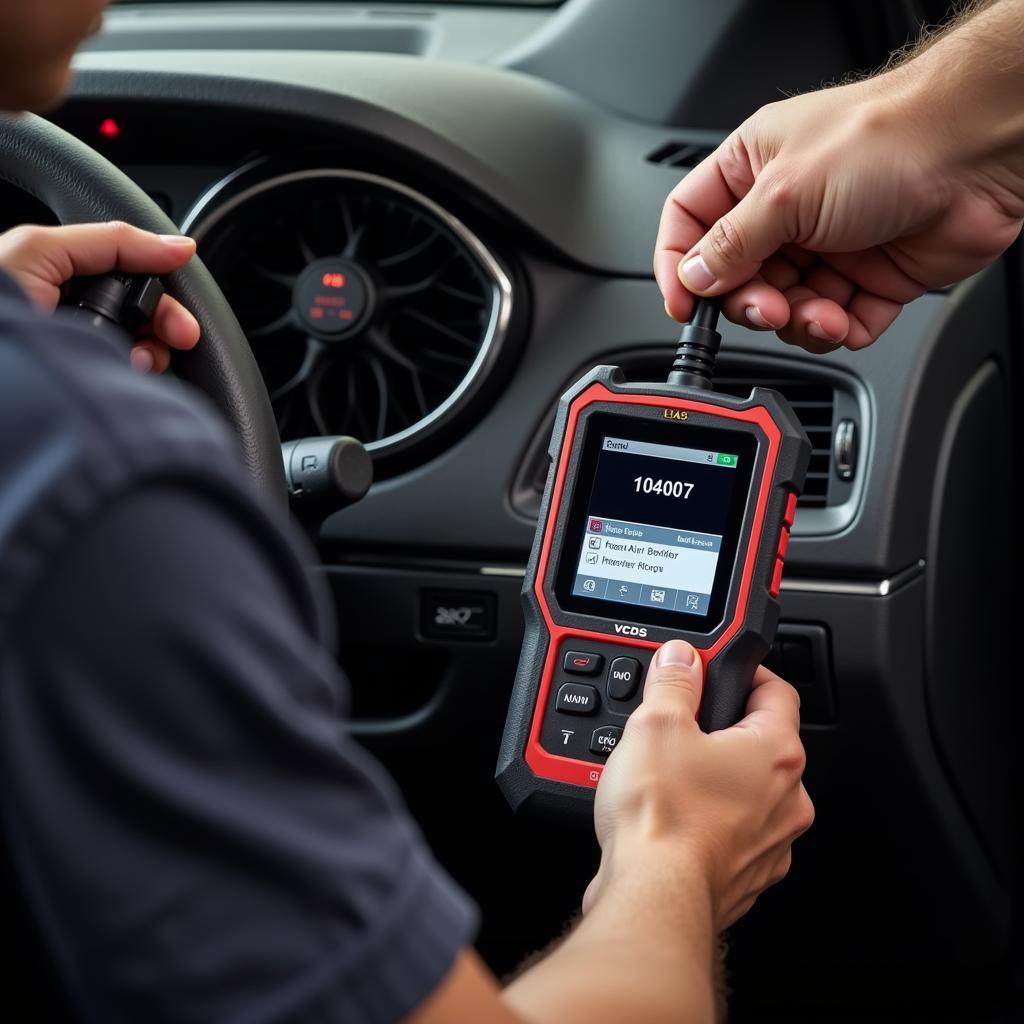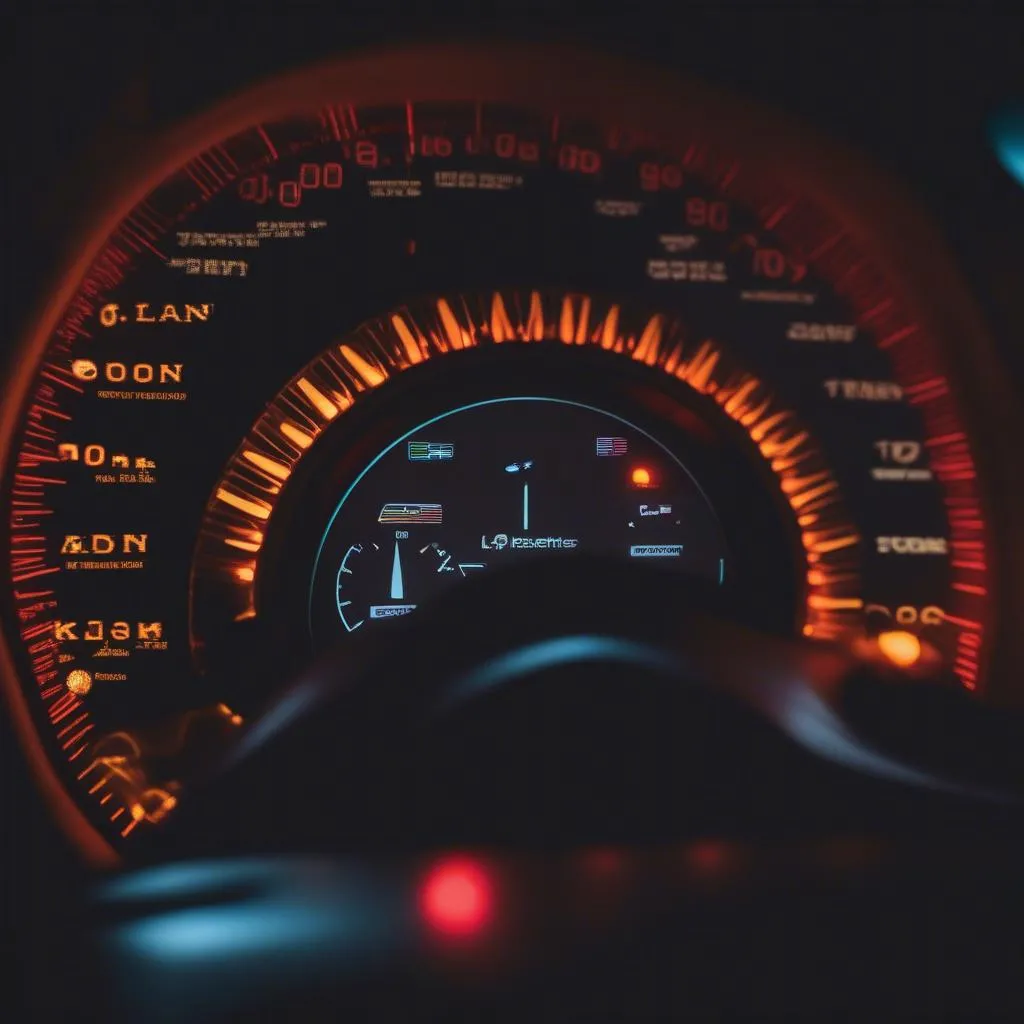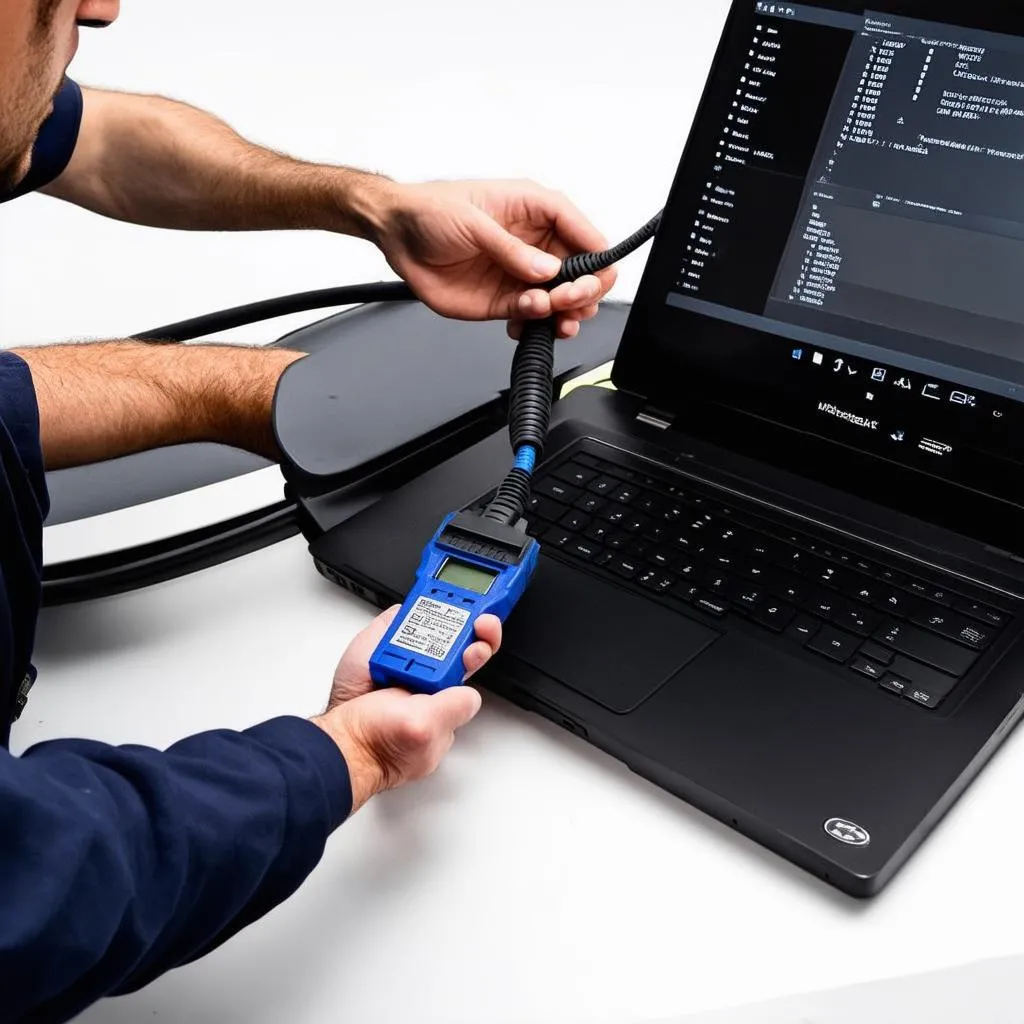The 10407 VCDS code can be a frustrating issue for car owners and mechanics alike. This article delves into the meaning, causes, and solutions for this specific trouble code, providing valuable insights for both DIY enthusiasts and professional technicians using the VCDS diagnostic tool.
Decoding the 10407 VCDS Code
The 10407 VCDS code often relates to issues within the HVAC (Heating, Ventilation, and Air Conditioning) system, specifically the fresh air blower. This blower is responsible for circulating fresh air into the cabin. A 10407 code typically signifies a malfunction or failure within this component or its associated circuitry. Understanding the underlying cause is the first step toward effectively resolving the problem and getting your car’s climate control back on track.
Common Causes of the 10407 VCDS Code
Several factors can trigger the 10407 VCDS code. One common cause is a faulty fresh air blower motor. Over time, the motor can wear out, leading to reduced performance or complete failure. Another potential culprit is a damaged blower motor resistor. The resistor controls the blower speed, and a malfunction can disrupt its operation. Wiring issues, such as loose connections or damaged wires, can also cause communication problems between the blower motor and the control module, resulting in the 10407 code. Finally, a failing control module itself can be the root cause, although this is less common.
 VCDS Code 10407: Fresh Air Blower Inspection
VCDS Code 10407: Fresh Air Blower Inspection
Troubleshooting and Fixing the 10407 VCDS Error
Diagnosing the 10407 VCDS code requires a systematic approach. First, visually inspect the fresh air blower motor and its wiring for any obvious damage or loose connections. Next, using the VCDS system, check the blower motor’s operational parameters and compare them with the manufacturer’s specifications. If the motor is faulty, replacing it is usually the most effective solution. If the resistor is the problem, replacing it is a relatively simple and inexpensive fix. Addressing any wiring issues, such as repairing damaged wires or securing loose connections, can also resolve the code.
How to Use VCDS to Diagnose 10407
Using VCDS to pinpoint the source of the 10407 code is crucial. Access the HVAC module within the VCDS software and check for any logged fault codes related to the fresh air blower. Then, use the output test function to activate the blower motor and observe its operation. This can help determine whether the motor itself, the resistor, or the wiring is at fault.
Replacing the Fresh Air Blower Motor with VCDS
Replacing the fresh air blower motor typically involves accessing the HVAC system, disconnecting the old motor, and installing the new one. After replacement, use VCDS to clear the 10407 code and verify that the new motor is functioning correctly. This ensures that the issue is resolved and the HVAC system is operating as intended.
“Properly utilizing the VCDS tool’s diagnostic capabilities is paramount when addressing the 10407 code. It allows for precise identification of the faulty component within the fresh air blower system.” – Michael Stevens, Automotive Electrical Systems Engineer
Preventing Future 10407 VCDS Codes
Regular maintenance can help prevent the 10407 code from recurring. Keeping the HVAC system clean and free of debris can prevent blockages and strain on the blower motor. Periodically inspecting the blower motor and its wiring for signs of wear or damage can also help prevent future problems.
 Preventing 10407 VCDS Code with Regular Maintenance
Preventing 10407 VCDS Code with Regular Maintenance
Conclusion: Conquering the 10407 VCDS Code
Addressing the 10407 VCDS code doesn’t have to be a daunting task. By understanding the code’s meaning, common causes, and troubleshooting steps, you can effectively resolve the issue and restore your car’s climate control system to optimal performance. Utilizing the VCDS diagnostic tool effectively is key to accurately pinpointing the problem and implementing the appropriate fix.
“Don’t underestimate the value of preventative maintenance in avoiding the 10407 code and other HVAC-related problems. Regular checks and cleaning can save you time and money in the long run.” – Dr. Emily Carter, Automotive Diagnostics Specialist
Need support with your vehicle diagnostics? Contact us via Whatsapp: +1 (641) 206-8880, Email: [email protected] or visit us at 276 Reock St, City of Orange, NJ 07050, United States. Our team is available 24/7.



